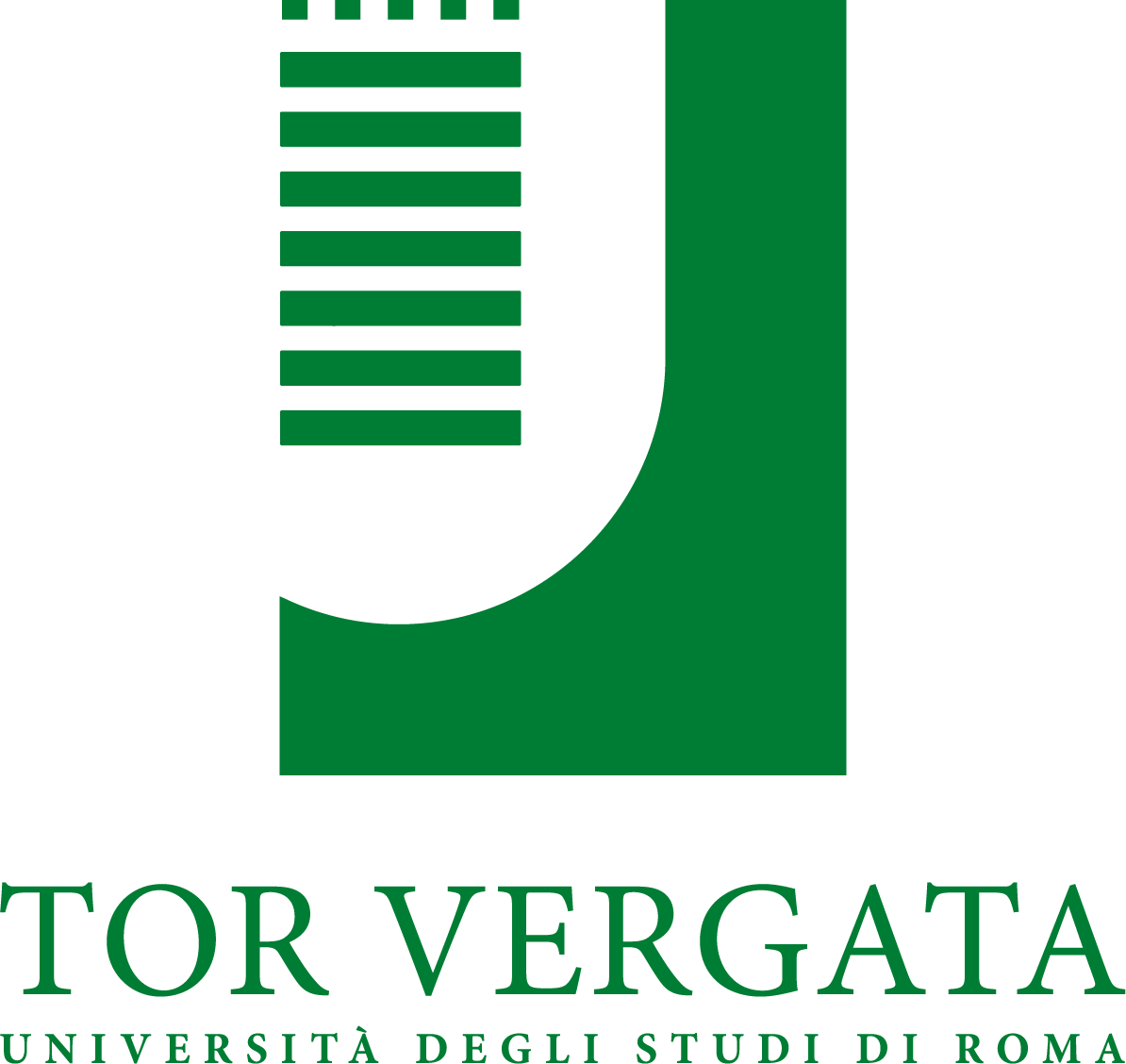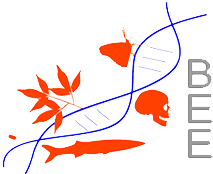
Curriculum Vitae
Mario Lo Bello received his first degree in Biological Sciences (laurea) at the University of Rome “La Sapienza” in 1978. In 1983 he become research scientist in Biochemistry at the University of Chieti, Faculty of Medicine. In 1985, as senior research scientist, he moved to University of Rome “Tor Vergata”, Faculty of Sciences M.F.N., Department of Biology. In 2001 he become Associate Professor in Biochemistry and in 2004 he was appointed by the same Faculty of Sciences M.F.N. as Full Professor in Clinical Biochemistry. He received his PhD in Protein Chemistry in U.K. (University of Cranfield) in 1991. He is now teacher of Clinical Biochemistry for undergraduate students of Biological Sciences and Biotechnologies and of Cellular Biochemistry for master students of Medical Biotechnologies, where he is acting as Director. Recently, he has been appointed also Director of the University Libraries System.
Almost his research has been devoted to the study of glutathione transferases enzymes. He has contributed, by using site directed mutagenesis and in collaboration with crystallography lab (M.W. Parker), to numerous studies on the active site of human GST P1-1 and its catalytic mechanism. Recently, with the aid of proteomic approach and using cellular models and tissues he has focused his research on the role of these antioxidant enzymes in neurodegenerative or cancer diseases under oxidative stress. He is co−author of more than 90 papers, published in international Journals peer-reviewed. He has been reviewer for international journals including Biochemical journal, Journal of Biological Chemistry, Journal of Molecular Biology, etc. and he is a member of the following Scientific societies: Italian Biochemical Society, American Society for Biochemistry and Molecular Biology, Biochemical Society.
Financial support
Mario Lo Bello’s researches have received support from CNR, MURST, the Italian Ministry of Health, and Ospedale Pediatrico Bambino Gesù
Main active collaborations
Prof. Michael Parker, St. Vincent’s Institute of Medical Research, Melbourne, Australia
Prof. Paul Dyson, Ecole Polytechnique Fédérale de Lausanne, Institut des sciences et ingénierie chimiques, Lausanne, Switzerland
Dr. Gianfranco Spalletta, IRCCS Santa Lucia Foundation, Rome, Italy
Research topics
Anticancer chemioprotective and antibacterial properties of isothiocyanates from cruciferous vegetables, in a range from cyanobacteria to humans
Some foods are considered to be an excellent tool for the primary prevention of chronic degenerative diseases such as cancer; it is essential, therefore, consume them daily in the diet. The Cruciferous (cabbage, cauliflower, broccoli sprouts Bruxelles and above broccoli) are valuable components for either potential anticancer or neuroprotective activity. A high intake of Cruciferous was associated with a significant reduction in the risk of developing prostate, breast, bladder, lung cancers and non-Hodgkin lymphoma. For the health effects associated with their consumption, these vegetables can be considered real pharma-foods. The edible part also contains significant amounts of glucosinolates, which are hydrolyzed to isothiocyanates (ITC) by the enzyme myrosinase when vegetables are chewed or soaked. Of great importance is the ability of ITC to modulate multiple targets simultaneously and exert multiple cellular mechanisms involved in the process of carcinogenesis, and to be used by plants to protect themselves from pathogenic organisms. Based on the results obtained in our laboratory, the ITC extracted by Cruciferous may find application as bioactive pool in human nutrition and prevention of specific diseases and be employed in the creation of natural pesticides in organic farming. These skills provide to outline strategies and nutritional dietary interventions aimed at increasing the daily intake of Cruciferous to achieving positive health effects.
S-glutathionylation of proteins involved in pathological processes. In search for possible markers of oxidative stress for human chronic diseases such as cancer and neurological disorders
The cellular redox state is a crucial mediator of multiple metabolic, signaling, and transcriptional processes in cells, and a fine balance between oxidizing and reducing conditions is essential for cell function and survival, and the modification of the glutathione/glutathione disulfide couple ([GSH]/[GSSG]) homeostasis is also associated with a number of diseases, including cancer. Glutathione is the main non-protein thiol involved in cellular antioxidant defense and could be binding to proteins, leading to the formation of glutathionylated proteins (GS-Pro). The formation of a mixed disulfide is generally defined as S-glutathionylation. The glutathionylation regulates different cellular pathways; it is involved in controlling oxidative cellular response and has important roles in pathological processes, such as tumor development, progression and metastasis. Several proteins are subjected to glutathionylation: mitochondrial enzymes/proteins of energy metabolism, cytosolic glycolytic enzymes and other enzymes related to energy metabolism, signaling proteins, cytoskeletal proteins and redox balance enzymes. Significant increases in glutathionylated proteins, for example, have been found in hyperlipidaemia, chronic renal failure, and diabetes mellitus, wherein higher levels of glutathionylated hemoglobin have been reported in patients with diabetes type 1 and 2. Between proteins subjected to glutahionylation, recently we have identified also the nuclear protein histone H3: this post-translational modification could be considered as probable epigenetic mechanism of gene expression regulation. Because of cysteine modification is critical to cellular signaling and its deregulation has consequences over a number of human diseases, glutathionylated proteins could be considered possible markers of oxidative stress for human diseases, thus acquiring a diagnostic/prognostic value. Therefore, therapeutic strategies that target protein S-glutathionylation may offer new promise for drug development also in combination with more standardized therapies.
Role of the oncofetal protein, glutathione transferase P1-1, as putative biomarker in the early phase of cancer
Prostate cancer is one of the most commonly diagnosed cancers in men. The number of affected men is expected to increase quickly as the population of males over the age of 50th grows worldwide. For patients who are not cured by local treatment and experience metastatic disease, neither androgen ablation nor chemotherapy can abrogate progression and death from androgen-independent/hormone-refractory disease. Due to indolent and silent progression of disease there is the urgent need to find biomarkers for the early phase of prostate cancer initiation and disease progression. Prostate-specific antigen (PSA) screening has led to earlier detection of prostate cancers, but its lack of specificity for neoplasm requires additional clinical markers for accurate detection of prostate cancers. We have recently demonstrated that the tumor suppressor gene glutathione S-transferase (GSTP1) is silenced in the vast majority of prostate tumor cells, by hypermethylation of CpG islands of gene and/or by binding of ERβ/eNOS complex to the promoter region, thus reinforcing the idea that it could be suitable for further studies as putative marker of prostate cancer cells.
Selected publications
1. M. Lo Bello, R. Petruzzelli, E. De Stefano, C. Tenedini, D. Barra and G. Federici (1990) Identification of a highly reactive sulphydryl group in human placental glutathione transferase by a site- directed fluorescent reagent. FEBS Lett. 263 (2), 389-391
2. G. Ricci, G. Del Boccio, A. Pennelli, M. Lo Bello, R. Petruzzelli, A.M. Caccuri and G. Federici (1991) Redox forms of human placenta glutathione transferase. J Biol Chem. 266, 21409-21415
3. P. Reinemer, H.W. Dirr, R. Ladestein, R. Huber, M. Lo Bello, G. Federici and M.W. Parker (1992) Three-dimensional structure of class Glutathione S-Transferase from human placenta in complex with S-hexylglutathione at 2.8 Å resolution. J Mol Biol. 227, 214-226
4. M. Lo Bello, M.W. Parker, A. Desideri, F. Polticelli, M. Falconi, G. Del Boccio, A. Pennelli, G. Federici and G. Ricci (1993) Peculiar spectroscopic and kinetic properties of Cys-47 in human placental Glutathione Transferase. J Biol Chem. 268,19033-19038
5. G. Ricci, M. Lo Bello, A.M. Caccuri, A. Pastore, M. Nuccetelli, M. W. Parker and G. Federici (1995) Site Directed Mutagenesis of Human Glutathione Transferase P1-1. Mutation of Cys-47 induces a positive coperativity in Glutathione Transferase P1-1. J Biol Chem. 270, 1243-1248
6. M. Lo Bello, A. Battistoni, A.P.Mazzetti, P.G. Board, M. Muramatsu, G. Federici and G. Ricci (1995) Site Directed Mutagenesis of Human Placental Glutathione Transferase P1-1. Spectral, Kinetic and Structural Properties of Cys-47 and Lys-54 mutants. J Biol Chem. 270, 1249-1253
7. Oakley, A., Rossjohn, J., Lo Bello, M., Caccuri A.,M., Federici, G. and Parker, M.W. (1997) The Three-Dimensional Structure of the Human Pi Class Glutathione Transferase P1-1 in Complex with the Inhibitor Ethacrynic Acid and its Glutathione Conjugate. Biochemistry. 36, 576-585
8. Lo Bello, M., Oakley, A., Battistoni, A., Mazzetti, A.P., Nuccetelli, M., Mazzarese, G., Rossjohn, J., Parker, M.W. and Ricci, G. (1997) Multifunctional Role of Tyr 108 in the Catalytic Mechanism of Glutathione Transferase P1-1. Crystallographic and Kinetic Studies with the Y108F Mutant Enzyme. Biochemistry. 36, 6207-6217
9. M. Lo Bello, M. Nuccetelli, E. Chiessi, A. Lahm, A.P. Mazzetti, A. Battistoni, A. M. Caccuri, A. J. Oakley, M. W. Parker, A. Tramontano, G. Federici and G. Ricci (1998) Mutations of Gly to Ala in Human Glutathione Transferase P1-1 Affect Helix 2 (G-site) and Induce Positive Cooperativity in the Binding of Glutathione. J Mol Biol. 284, 1717-1725
10. Lucia Piredda, Maria Grazia Farrace, Mario Lo Bello, Walter Malorni, Gennaro Melino, Raffaele Petruzzelli and Mauro Piacentini (1999) Identification of “Tissue” Transglutaminase Binding Proteins in Neural Cells Committed to Apoptosis. Faseb J. 13, 355-364
11. M. Lo Bello, M. Nuccetelli, A.M. Caccuri, L.Stella, M.W. Parker, J. Rossjohn, W. McKinstry, A.F. Mozzi, G. Federici, F. Polizio, J.Z. Pedersen and G. Ricci (2001) Human Glutathione Transferase P1-1 and Nitric Oxide Carriers: a New Role for an Old Enzyme J Biol Chem. 276, 42138-42145
12. C. Micaloni, G. K-W. Kong, A. P. Mazzetti, M. Nuccetelli, G. Antonini, L. Stella, W. J. McKinstry, G. Polekhina, J. Rossjohn, G. Federici, G. Ricci, M. W. Parker and M. Lo Bello (2003) Engineering a new C-terminal tail in the H-site of human glutathione transferase P1-1: structural and functional consequences J Mol Biol. 325, 111-122
13. Cesareo E, Parker LJ, Pedersen JZ, Nuccetelli M, Mazzetti AP, Pastore A, Federici G, Caccuri AM, Ricci G, Adams JJ, Parker MW, Lo Bello M. (2005) Nitrosylation of human glutathione transferase P1-1 with dinitrosyl diglutathionyl iron complex in vitro and in vivo. J Biol Chem. 280, 42172-42180
14. Ang WH, De Luca A, Chapuis-Bernasconi C, Juillerat-Jeanneret L, Lo Bello M, Dyson PJ. (2007) Organometallic Ruthenium Inhibitors of Glutathione-S-Transferase P1-1 as Anticancer Drugs. ChemMedChem. 2, 1799-1806
15. Primavera A, Fustinoni S, Biroccio A, Ballerini S, Urbani A, Bernardini S, Federici G, Capucci E, Manno M, Lo Bello M. (2008) Glutathione Transferases and Glutathionylated Hemoglobin in Workers Exposed to Low Doses of 1,3-Butadiene. Cancer Epidemiol. Biomarkers Prev. 17, 3004-30012
16. Ang WH, Parker LJ, De Luca A, Juillerat-Jeanneret L, Morton GJ, Lo Bello M, Parker MW, Dyson PJ. (2009) Rational design of an organometallic glutathione transferase inhibitor. Angew Chem Int Ed Engl. 48, 3854-7
17. Re A, Aiello A, Nanni S, Grasselli A, Benvenuti V, Pantisano V, Strigari L, Colussi C, Ciccone S, Mazzetti AP, Pierconti F, Pinto F, Bassi P, Gallucci M, Sentinelli S, Trimarchi F, Bacchetti S, Pontecorvi A, Lo Bello M, Farsetti A. (2011) Silencing of GSTP1, a Prostate Cancer Prognostic Gene, by the Estrogen Receptor-β and Endothelial Nitric Oxide Synthase Complex. Molecular Endocrinology vol. 25, p. 2003-2016
18. Parker LJ, Italiano LC, Morton CJ, Hancock.C, Ascher DB, Aitken JB, Harris HH, Campomanes P, Rothlisberger U, De Luca A, Lo Bello M, Ang WH, Dyson PJ, Parker MW (2011) Studies of Glutathione Transferase P1-1 Bound to a Platinum(IV)-Based Anticancer Compound Reveal the Molecular Basis of Its Activation. Chemistry-A European Journal, vol. 17, p. 7806-17816
19. De Luca A, Moroni N, Serafino A, Primavera A, Pastore A, Pedersen JZ, Petruzzelli R, Farrace MG, Pierimarchi P, Moroni G, Federici G, Sinibaldi Vallebona P, Lo Bello M. (2011) Treatment of doxorubicin-resistant MCF7/Dx cells with nitric oxide causes histone glutathionylation and reversal of drug resistance. Biochem. J. vol. 440, p. 175-183.
20. Bocedi A, Fabrini R, Farrotti A, Stella L, Ketterman AJ, Pedersen JZ, Allocati N, Lau PC, Grosse S, Eltis LD, Ruzzini A, Edwards TE, Morici L, Del Grosso E, Guidoni L, Bovi D, Lo Bello M, Federici G, Parker MW, Board PG, Ricci G. (2013) The impact of nitric oxide toxicity on the evolution of the glutathione transferase superfamily: a proposal for an evolutionary driving force. J Biol Chem. 288(34):24936-47
Research group and contacts
Anna Paola Mazzetti: (Ricercatore) anna.paola.mazzetti@uniroma2.it
Alessandra Primavera: (Post-doc) alessandra.primavera.2@uniroma2.it
Maria Carmela Fiorile: (Laureanda) mariacarmela.fiorile@libero.it





Università di Tor Vergata